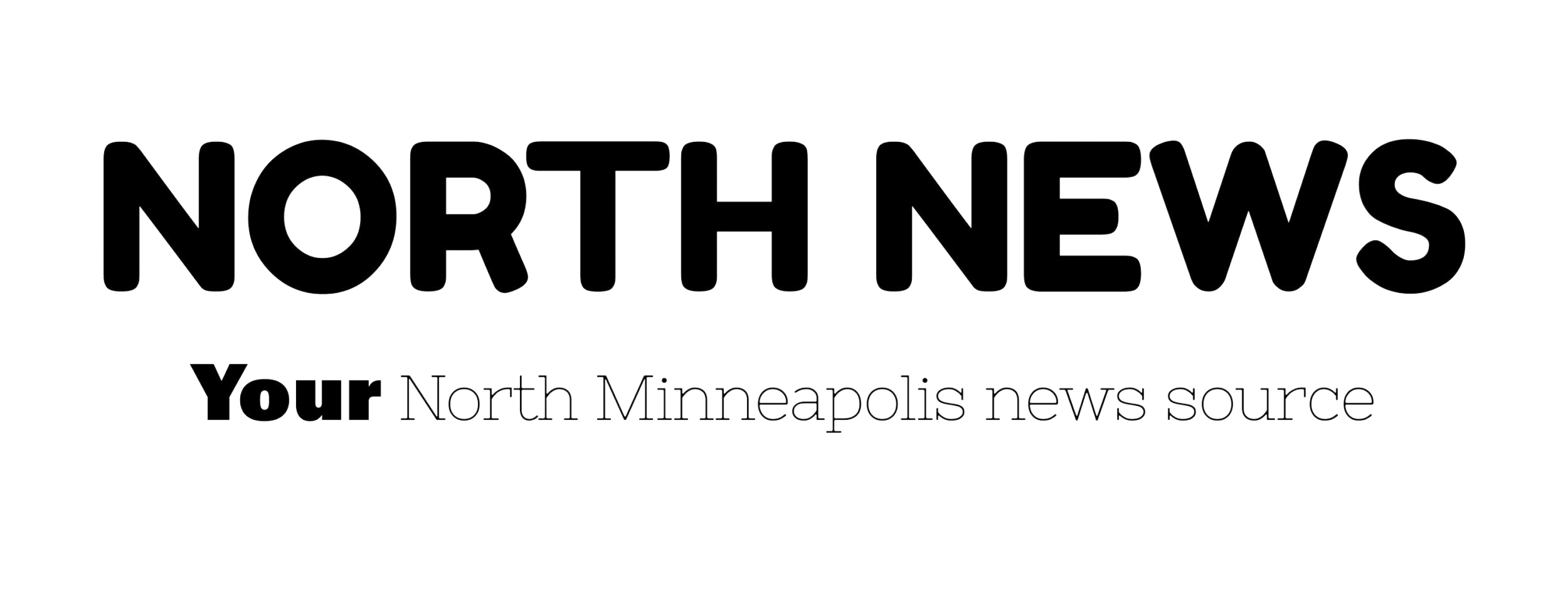Olson Memorial Bridge displays history and community through art
The John Biggers memorial project, pictured, lines both rails of the Olson Memorial Highway bridge. The project consists of over 300 hand-painted glass enamel panels. Photo by Kiya Darden
By Kiya Darden, North High School
A colorful new addition to the Olson Memorial Highway bridge across I-94 draws inspiration from a beautiful mural long lost to a wrecking ball.
The new colorful addition to the bridge is covered in 300 handpainted, glass enamel panels and stands as a love letter to North Minneapolis and as a tribute to a project by artist John Biggers, a major 20th-century African American artist.
The original John Biggers “Celebration of Life” project was a mural Biggers designed near the bridge that was torn down in favor of the 2000 Heritage Park housing project. He passed away two years later.
Instead of being lost to memory, the John Biggers Seed Project was founded in 2014 by a group of artists from all over Minneapolis to pay homage to the artists, some of whom were also present to paint Biggers's original mural.
The entire bridge is full of panels as a tribute to the original mural. Each contributing artist was able to add their own unique touch to a piece of the big picture.
From brainstorming, and planning with the city of Minneapolis and then to its execution – painting with metal enamel and firing it in layers over the course of 20 years, the dedication never faltered.
The sentiment for this project goes far beyond a memorial. It represents the creativity that is poured into North Minneapolis in an effort to bring residents closer together. It’s something artists hope can be seen for years to come.
Roger Cummings, contributing artist and a mentee of Biggers, designed all of the backside panels facing the highway and a few front ones. Each panel depicts symbols and paintings in John Biggers’s original mural, including a red crab holding up a stool representing the community.
“After that mural got torn down I used the crab to symbolize a kind of upholding the community in the city again,” said Cummings, the director of Juxtaposition Arts.
The crab represents the holding up of community. Photo by Kiya Darden
He was also able to call back the original mural by using Adinkra symbols on all of the back- panels facing the highway.
Christopher Harrison, another contributing artist, was able to elaborate on the symbolism of Adinkra symbols in the bridge.
“Each one has kind of, over the centuries, been metamorphosed into different philosophies and principles,” he said.
Adinkra symbols are West African symbols used in a mix of different African cultures. Each of those cultures then added to the creation of an adinkra symbol language-like system of communication.
The Adinkra symbols on the bridge represent principles like peace, hope, and family.
“It’s about you ancestors, it’s about legacy, and it’s about keeping people’s memory and their endurance and their contributions around for many years,” Cummings said.


